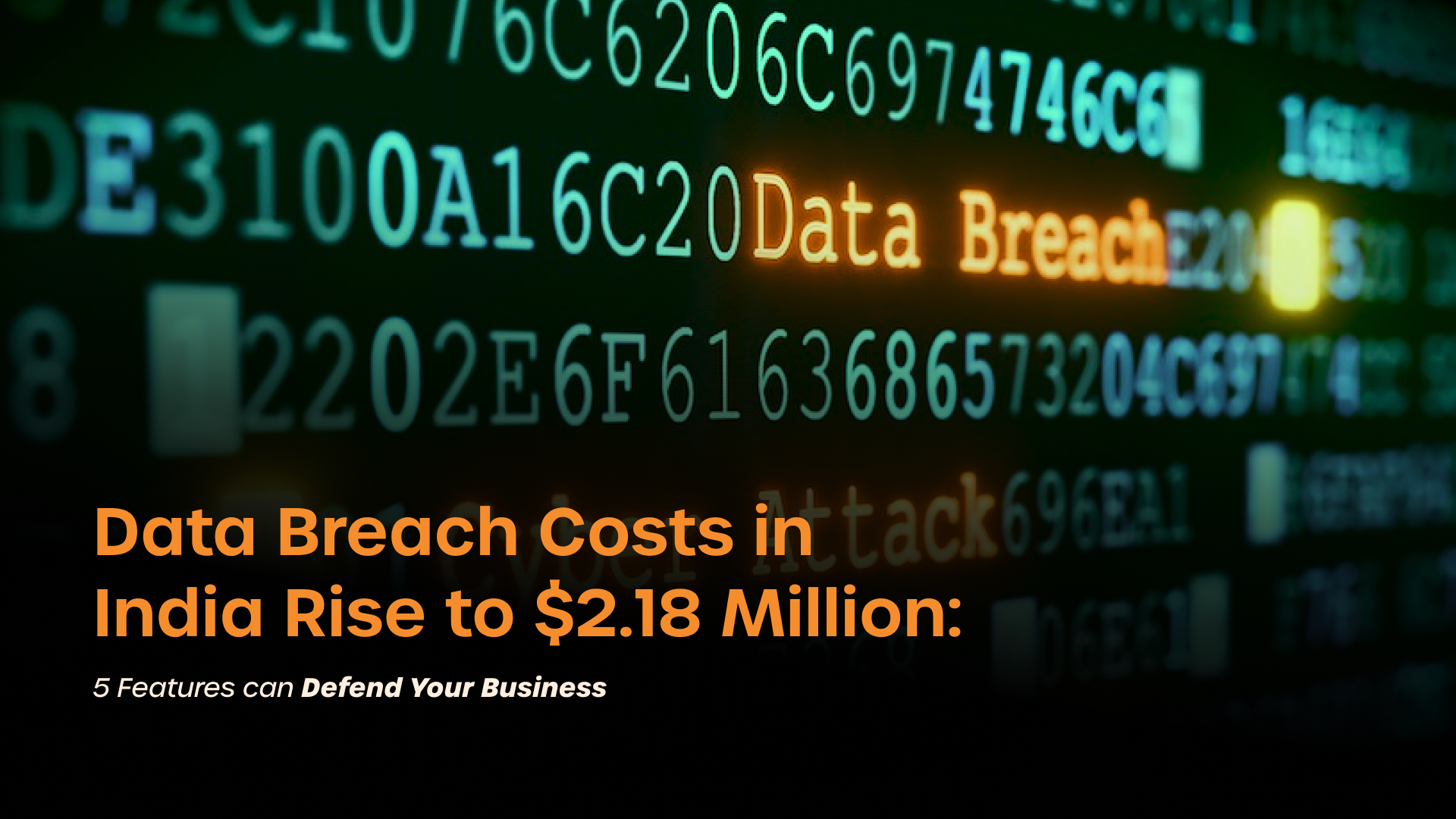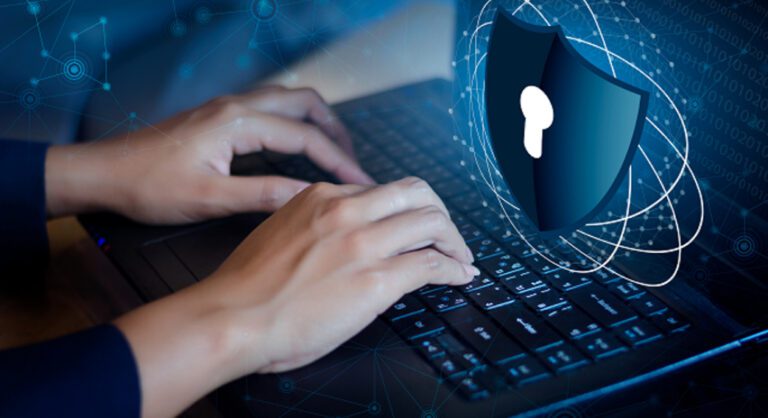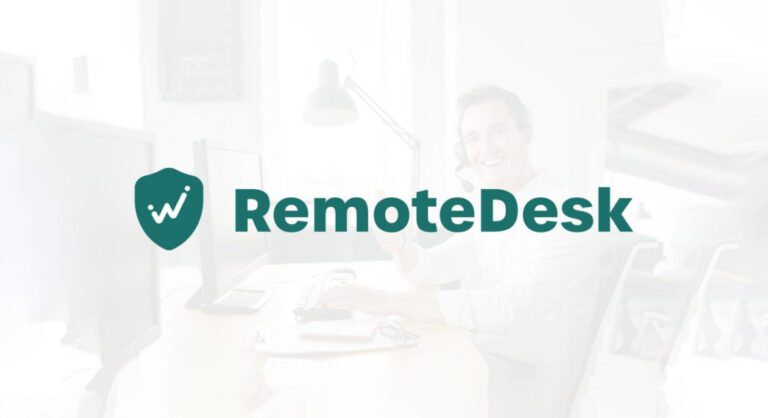
Data Breach Costs in India Rise to $2.18 Million: 5 Features can Defend Your Business
- Rajnish Kumar
- 6 Mins

Summary
In a startling revelation, the Reserve Bank of India (RBI) has reported that the average cost of data breaches in India has surged to $2.18 million in 2023, marking a significant 28% increase since 2020.
In a startling revelation, the Reserve Bank of India (RBI) has reported that the average cost of data breaches in India has surged to $2.18 million in 2023, marking a significant 28% increase since 2020.
This alarming trend underscores the urgent need for robust data security measures to protect sensitive information and mitigate financial losses. With cybercrime costs expected to reach a staggering $13.82 trillion globally by 2028, organizations must act swiftly to safeguard their data. RemoteDesk, a leading tool in AI-powered eDLP security solutions, offers a comprehensive suite of features designed to enhance data protection and ensure compliance, providing a critical shield against the rising tide of cyber threats.
Phishing Tops India’s Cybercrime
The RBI’s report highlights that phishing attacks are the most common form of cybercrime in India, accounting for 22% of incidents. This is followed closely by stolen or compromised credentials, which make up 16% of attacks. The severity of the situation is further emphasized by the dramatic rise in security incidents handled by the Indian Computer Emergency Response Team (CERT-In), which increased from 53,117 in 2017 to a staggering 1,320,106 during the period from January to October 2023.
Unauthorized network scanning, probing, and vulnerable services constitute over 80% of all security incidents in the country. These figures paint a grim picture of the cybersecurity landscape in India and highlight the need for organizations to adopt advanced security solutions to protect their assets and sensitive information.
Top vulnerable sector
The automotive industry has emerged as the most vulnerable sector, with smart mobility application programming interfaces (APIs) and electric vehicle (EV) charging infrastructure being major attack vectors. Despite the BFSI (Banking, Financial Services, and Insurance) sector being relatively protected due to well-defined regulations, it is not immune to cyber threats. The rising costs and frequency of data breaches necessitate a proactive approach to cybersecurity across all industries.
10 Key Security Features to Reduce Data Breach Risk
In today’s digital landscape, data breaches are becoming increasingly common and sophisticated. To combat this growing threat, organizations must implement comprehensive security measures. Here are ten key security features that can significantly reduce the risk of data breaches and protect sensitive information.
1. Multi-Factor Authentication (MFA)
Description: Multi-Factor Authentication requires users to provide two or more verification factors to gain access to resources such as applications, online accounts, or VPNs.
Benefit: MFA enhances security by adding extra layers of verification beyond just usernames and passwords. This makes it significantly more difficult for attackers to gain unauthorized access, even if they have compromised a password.
2. Data Encryption
Description: Encryption converts data into a code to prevent unauthorized access. It should be applied to data at rest, in transit, and in use.
Benefit: Even if data is intercepted or accessed without permission, encryption ensures that it cannot be read or used by unauthorized parties, protecting sensitive information from being compromised.
3. Endpoint Security Solutions
Description: Endpoint security solutions protect devices such as laptops, desktops, and mobile devices from threats and attacks.
Benefit: Securing all devices connected to the network reduces the attack surface and ensures that endpoints are protected against malware, phishing attacks, and other security threats.
4. Advanced Threat Detection and Response
Description: Solutions like Extended Detection and Response (XDR) and Security Information and Event Management (SIEM) help detect and respond to threats in real-time.
Benefit: By identifying and responding to threats quickly, these solutions minimize potential damage and reduce the likelihood of a successful data breach.
5. Regular Security Audits and Vulnerability Assessments
Description: Regularly scheduled security audits and vulnerability assessments help identify weaknesses and ensure that security measures are effective.
Benefit: Continuous monitoring and assessment allow organizations to stay ahead of potential vulnerabilities and address them before they can be exploited by attackers.
6. Access Control and Identity Management
Description: Implementing strict access control policies and managing user identities helps ensure that only authorized personnel have access to sensitive information.
Benefit: Reduces the risk of unauthorized access and helps prevent insider threats, thereby protecting critical data and systems.
7. Data Loss Prevention (DLP)
Description: Data Loss Prevention solutions monitor and protect data from unauthorized access or transfer.
Benefit: DLP prevents sensitive data from leaving the organization, whether intentionally or unintentionally, ensuring that critical information remains secure.
8. Network Security Measures
Description: Network security measures include firewalls, intrusion detection/prevention systems, and secure VPNs.
Benefit: Protects the network from unauthorized access and cyber threats, ensuring that data transmitted across the network remains secure.
9. Security Awareness Training
Description: Educating employees on security best practices and how to recognize threats is crucial for maintaining a secure environment.
Benefit: Reduces the risk of human error and increases the organization’s overall security posture by making employees more aware of potential threats and how to avoid them.
10. Incident Response Plan
Description: An Incident Response Plan is a structured approach to handle and recover from security incidents.
Benefit: Ensures a quick and efficient response to minimize the impact of breaches and restore normal operations. Having a well-defined plan helps mitigate damage and supports business continuity.
How RemoteDesk Helps Here:
RemoteDesk is an AI – based advanced solution that enhances these security features by addressing the specific risks associated with insider threats and ensuring compliance. Here’s how RemoteDesk can help:
- Continuous Facial Verification: RemoteDesk continuously verifies the identity of employees through facial recognition technology, ensuring that the person working is the authorized user.
- Imposter Detection: The system checks for imposters attempting to use another person’s credentials, adding an extra layer of security.
- Employee Presence Detection: RemoteDesk monitors if the employee is present in front of the system while working on confidential data, preventing unauthorized access when the employee is away.
- Capture Detection: The solution detects if an employee is capturing data through their mobile phone by clicking pictures of the monitor or laptop screen, preventing data leaks.
- Shoulder Surfing Prevention: RemoteDesk can detect if an unauthorized user is shoulder surfing, ensuring that confidential information is not exposed to unintended viewers.
- Compliance Management: By verifying employee identity and monitoring their activities, RemoteDesk helps ensure compliance with regulations such as HIPAA PHI, PCI DSS, and others.
-
Final Take on Data Breach Rise in India
The rising cost of data breaches in India is a clear indication that organizations must prioritize data security to protect their assets and sensitive information. RemoteDesk offers a comprehensive solution that not only enhances data protection but also ensures compliance with industry regulations. By adopting RemoteDesk’s advanced security features, organizations can mitigate the risk of data breaches, reduce financial losses, and maintain their reputation in an increasingly digital world.
1. What is RemoteDesk?
2. How does RemoteDesk ensure compliance with regulations like PHI, HIPAA & PCI DSS?
3. Can RemoteDesk integrate with our existing security and productivity tools?
4. How does RemoteDesk handle remote and hybrid workforce management?
5. What types of analytics and reporting does RemoteDesk offer?
Get Started Today
Sign up in minutes. Secure your remote
workforce with confidence.
See how RemoteDesk makes compliance and data protection effortless.




